
The Complete Guide to Project Deliverables: What They Are and How to Manage Them Successfully
Ever launched a project only to realize the final “delivery” isn’t what stakeholders wanted? You’re not alone.
Your team thought they nailed it, only to face blank stares and mounting frustration when expectations don’t align. That kind of mismatch leads to:
- Scope creep
- Wasted resources
- Frustrated teams
- Damaged stakeholder trust
The entire mess can be prevented with the right approach to project deliverables.
In this guide, we’ll show you complete walkthroughs of project deliverables, what they are, and how you can manage them successfully.
So let’s dive in!
What Are Project Deliverables?
Project deliverables are the specific outputs or results a project produces and delivers to stakeholders. These can be tangible or intangible, but they are always:
- Defined within the project scope
- Aligned with project objectives
- Measurable and verifiable
- Reviewed against quality standards
They include final products, key features, or documentation like signed contracts, project plans, and status reports created throughout the project lifecycle, typically agreed upon during the planning phase as progress checkpoints.
So basically, deliverables are the outputs that provide value to stakeholders and contribute to the organization’s overall objectives.
The Key Differences Between Project Deliverables, Objectives, and Milestones
Here’s how these key project components compare:
| Component | Definition | Purpose | Example |
| Project objectives | The benefits, outcomes, and performance improvements expected from the project | Define the “why” – desired outcomes and goals that focus on external results | Set up a collaborative system for managing the client’s projects |
| Project deliverables | Specific, tangible outputs produced that enable objectives to be achieved | Provide the “what” – actual products and results that must be delivered | Kanban board, recurring tasks, role permissions, activity log |
| Project milestones | Checkpoints that mark progress and phase transitions without requiring delivery | Mark the “when” – progress indicators and thresholds to new phases | Board approved, tasks tested, roles configured |
What Are the Main Types of Project Deliverables?
Project deliverables come in different forms –
Internal deliverables
Internal deliverables include project plans, status reports, and internal documentation etc. These deliverables help your team manage and execute the project, but never reach external stakeholders.
External deliverables
External deliverables are what clients and stakeholders actually receive from your project. They’re basically the revenue-generating outputs that fulfill contracts and directly impact client satisfaction.
Process deliverables
Process deliverables are created during project execution to guide and validate your work. These include wireframes, testing reports, and workflow documentation. They help teams stay on track and reduce risks before final delivery.
Product deliverables
Product deliverables are the main outputs your project promises to create. They represent the core results that define whether your project succeeds or fails. These include software applications, training programs, and completed installations.
Tangible deliverables
Tangible deliverables are physical or measurable outputs you can see and touch. They’re easier to verify and approve because their completion status is clearly visible. These include printed materials, hardware installations, and manufactured products.
Intangible Deliverables
Intangible deliverables provide value but can’t be physically measured. While harder to quantify, they often deliver long-term benefits that exceed the initial project investment. These include process improvements, enhanced capabilities, and staff training.
The Importance of Project Deliverables
Deliverables aren’t just outputs; they’re the core of how projects are planned, tracked, and delivered.
Here’s why project deliverables matter:
- Build realistic schedules: Deliverables help you plan based on actual work rather than assumptions. This keeps your timeline achievable and prevents last-minute pressure.
- Guide resource and cost planning: When you know what needs to be delivered, it’s easier to assign the right people, tools, and time while keeping budgets in check and teams prepared.
- Make progress visible: Deliverables create clear checkpoints throughout the project. Teams can see what’s completed, what’s next, and where delays might occur, removing guesswork from project status.
- Align teams around shared goals: Clear deliverables give everyone a common target. This clarity improves coordination, reduces confusion, and helps roles sync more efficiently.
- Set stakeholder expectations: Documented deliverables clarify what’s in scope and what’s not. This prevents scope creep, reduces project challenges, and keeps clients informed with tangible progress updates.
- Maintain quality standards: Tying each deliverable to clear acceptance criteria ensures that all outputs meet required quality levels before moving forward.
- Spot risks early: Well-managed deliverables expose potential bottlenecks and allow for early quality checks, so issues can be fixed before they grow.
Also Read: Why project management is important
How to Identify Project Deliverables
Follow this step-by-step process to identify the deliverables of your projects:
Step 1: Define clear objectives and set your project scope
Start by clarifying what your project aims to achieve and defining or reviewing clear objectives. Use well-structured SMART goals to turn broad intentions into focused, actionable targets that align with stakeholder expectations.
Once your objectives are clear, define the project scope.
- What’s included?
- What’s not?
- What does success look like?
A clearly defined scope prevents scope creep, keeps the team aligned, and ensures every deliverable ties back to the overall project goal.
Step 2: Break down the work using a WBS
Use a Work Breakdown Structure (WBS) to break the project into manageable parts such as phases, components, and tasks.
This gives you a clear picture of what needs to be delivered at each stage and helps you avoid missing important deliverables like documentation or review checkpoints.
As you build your WBS, create work packages that clarify:
- What is delivered at the end of each phase
- Which outputs support project execution
- How do deliverables connect or depend on one another
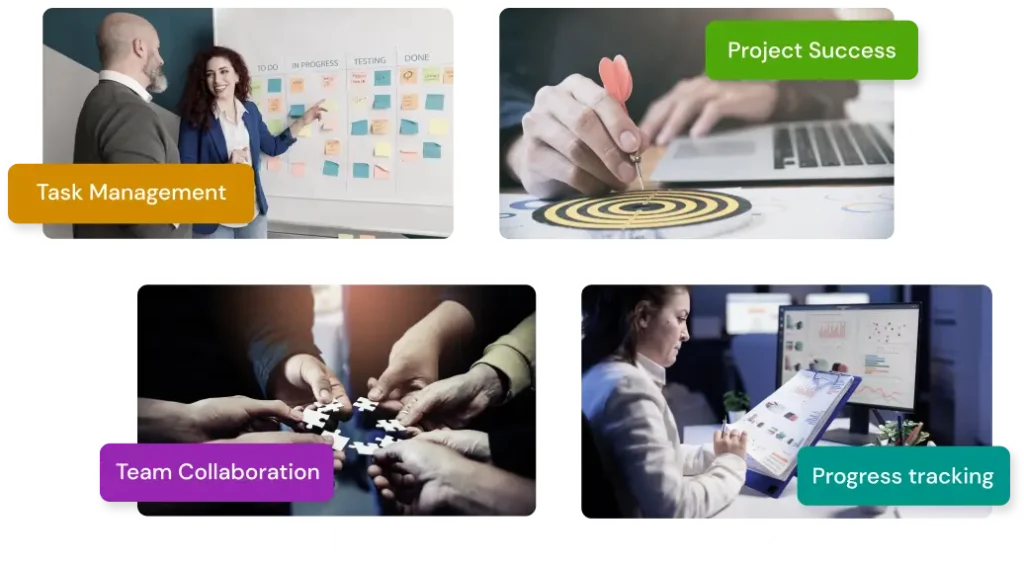
Step into the Future of Project Management!
Step 3: Identify and classify major deliverables
Now, go through each project phase and list all expected outputs. These might include tangible items (e.g., reports, prototypes) and intangible ones (e.g., process improvements, staff onboarding).
Then ask, is this something internal for team use or external for client delivery?
Label accordingly so everyone stays aligned.
Step 4: Involve stakeholders early
Before finalizing your deliverables list, bring in key stakeholders for input. Their insights can:
- Identify gaps in your deliverables list
- Clarify expectations that weren’t initially clear
- Validate project priorities and requirements
This approach makes adjusting deliverables much easier than making changes during execution. Additionally, early involvement aligns teams around shared priorities while reducing costly rework later in the project.
Learn how to involve the right people from the start with our complete guide on project stakeholders
Step 5: Map deliverables to KPIs
Every deliverable should link back to a project key performance indicator or success metric. If it doesn’t influence your goals, ask why it’s there.
This keeps your efforts focused and ensures you’re not just delivering outputs but meaningful results.
How to Manage Project Deliverables
Identifying deliverables is just the beginning, but managing and delivering them is where most teams hit roadblocks.
Here’s how you can do it successfully:
Use project management tools
The first step to managing deliverables is organizing your project in a way that makes each output visible and trackable.
By using visual project management tools, you turn deliverables into structured workflows mapped by priority, timeline, and team ownership.
With features like Kanban boards, Gantt charts, milestone tracking, and task hierarchies, you can oversee every deliverable’s journey from planning to completion without missing deadlines or losing focus.
Note: We’re using FluentBoards for demonstration throughout this walkthrough of management steps.
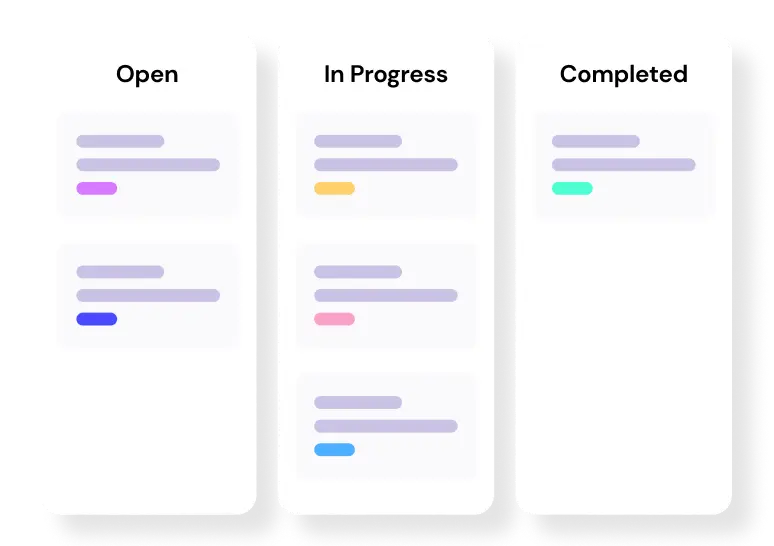
Level up your WordPress project management game with this Trello equivalent solution – where limitless possibilities come at an unbeatable price!
Document scope and objectives
Identifying deliverables is the planning phase, but execution starts when you document them clearly. Your scope and objectives should move from planning notes to visible, trackable elements.
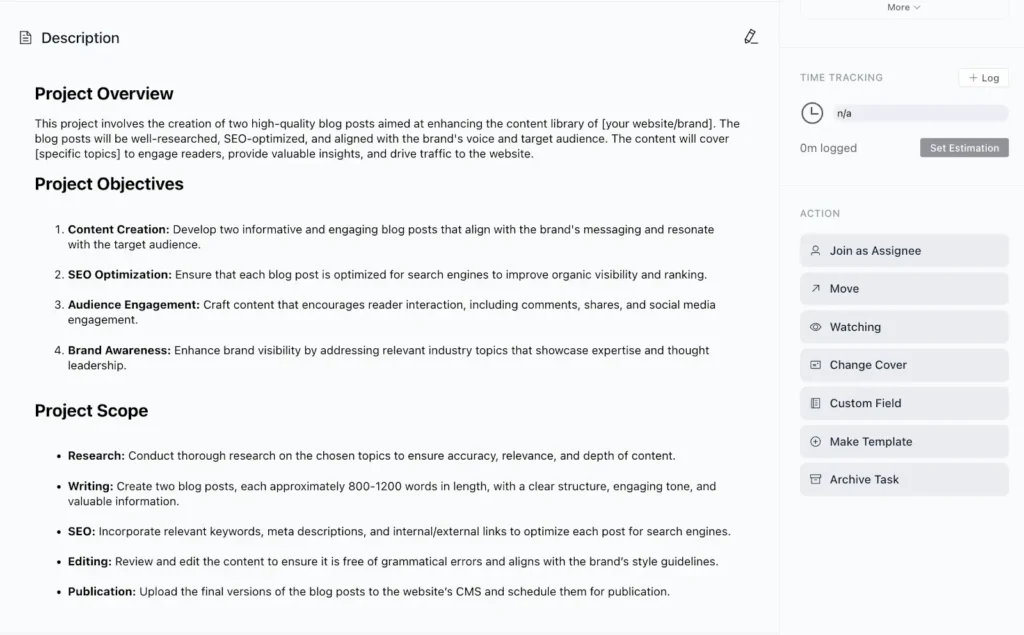
With project management tools, you can keep deliverables aligned, easy to access, and traceable. This ensures your team and stakeholders stay informed and can monitor any scope changes as the project progresses.
Manage tasks and subtasks
You’ve already used WBS to identify your deliverables. Now it’s time to bring them into your workflow by turning each one into actionable tasks your team can start executing.
Start by creating a project board like Kanban, where each deliverable is outlined as a manageable task. Organize the workflow into stages such as To-Do, In Progress, and Completed to reflect real-time progress.
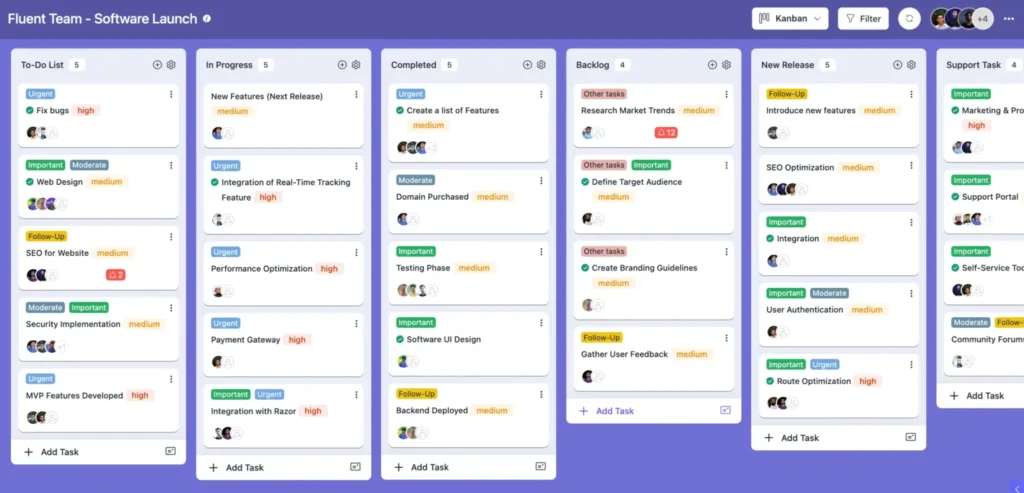
Then, break each deliverable into subtasks so the work feels more achievable and less overwhelming.
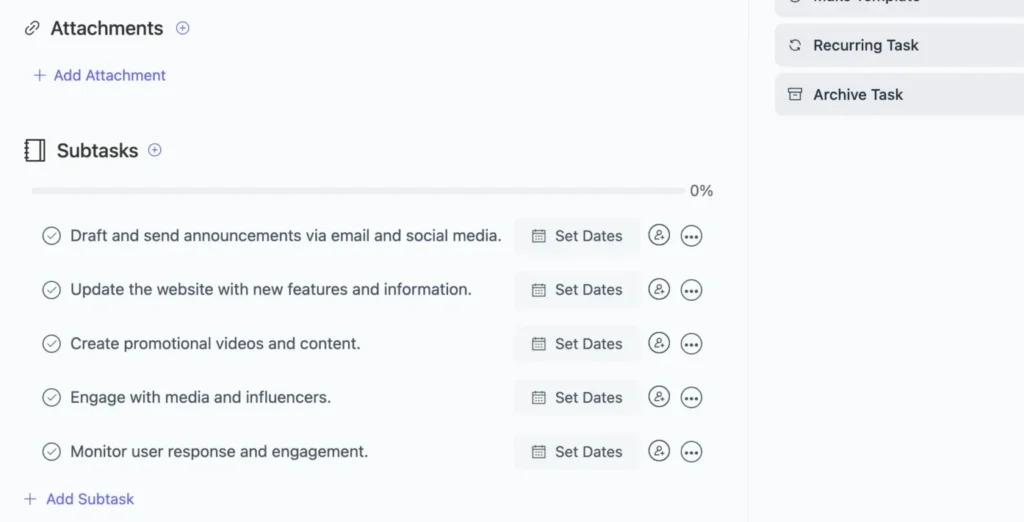
This makes deliverables easier to manage at every stage, giving your team and stakeholders a real-time view of what’s moving, what’s blocked, and what’s next without the guesswork.
Assign responsibilities
Every deliverable needs a designated owner who takes responsibility for its completion, quality, and timely delivery. So start onboarding your project team based on their roles and responsibilities, assigning them to specific tasks.
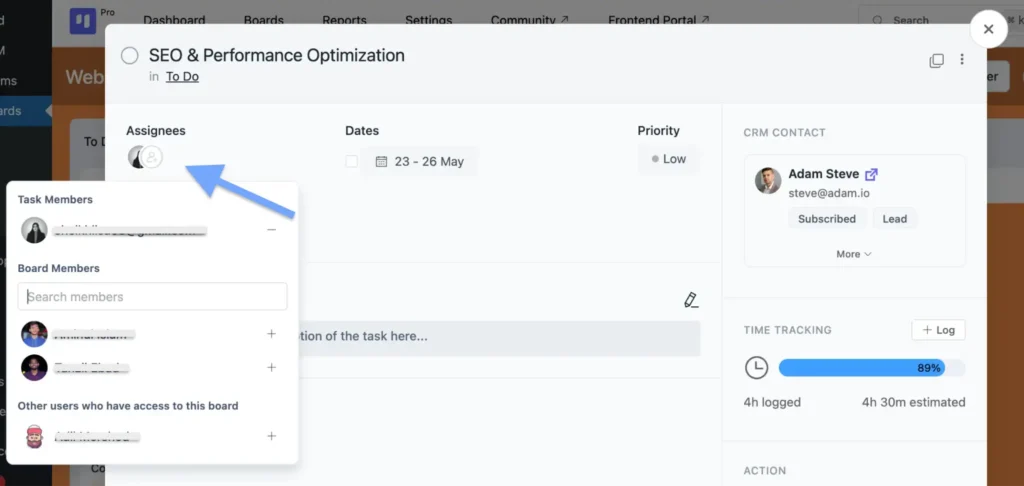
Also, before assigning, consider your team’s availability and strengths so responsibilities are realistic and well-balanced. This step avoids confusion, reduces micromanagement, and ensures no deliverable falls through the cracks.
Set realistic deadlines and prioritize tasks
Break down deliverable timelines based on complexity and team capacity, assigning due dates that maintain momentum without burning out your team.
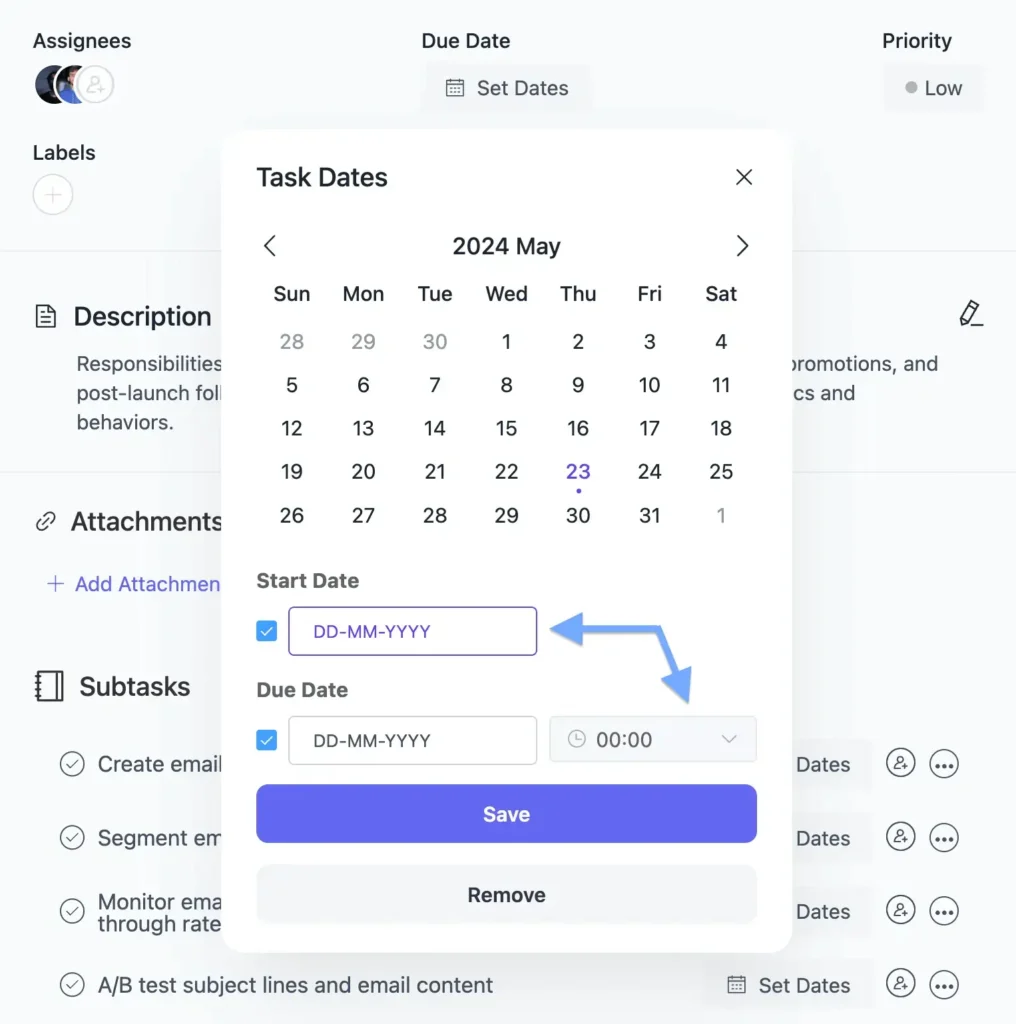
Use a prioritization system to organize deliverables by urgency and dependency, marking them as high, medium, or low priority to focus attention on what matters most.

For non-urgent deliverables, create a project backlog to keep them on the radar without cluttering active workflows. This systematic approach ensures critical deliverables get completed first while maintaining visibility of future work.
Establish clear communication
Managing deliverables successfully requires keeping your team connected through real-time communication, like comments for instant collaboration on critical work.
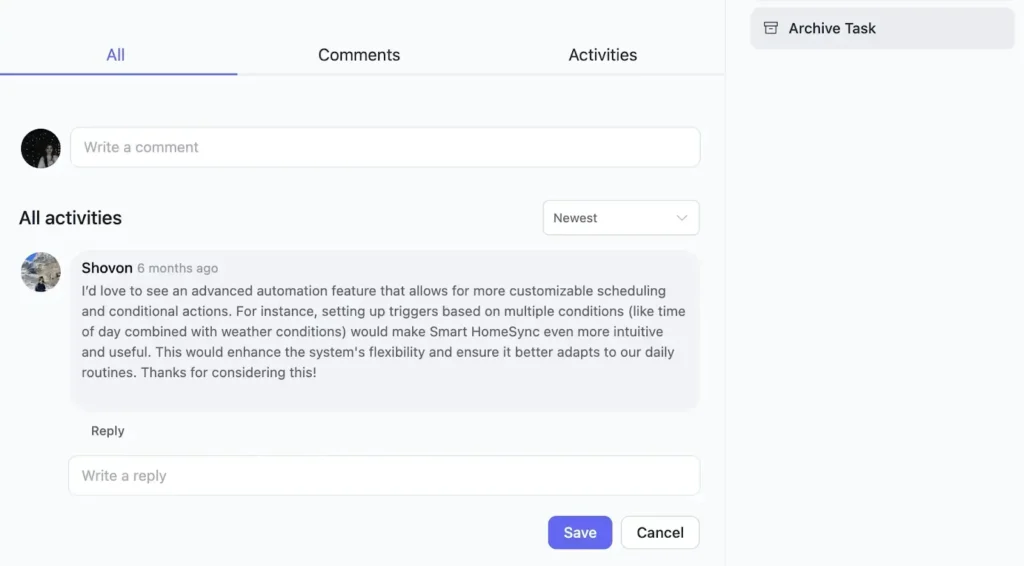
Your stakeholders need the same level of clarity to make informed decisions and provide timely feedback.
So provide them with progress visibility through a frontend portal or shared board view that shows deliverable status without internal project clutter.
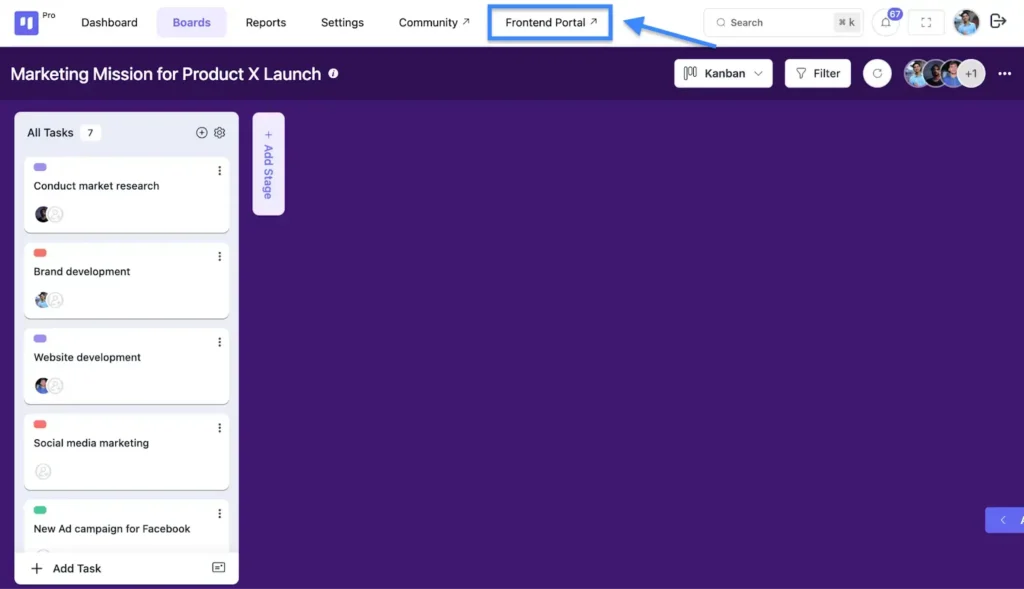
This creates efficient feedback loops, reduces back-and-forth communication, and ensures everyone stays informed about deliverable progress while maintaining clear accountability.
Track progress
Tracking deliverable progress effectively demands real-time visibility into project health and team performance. Utilize project management dashboards that provide live tracking of deliverable status, completion rates, and performance metrics.
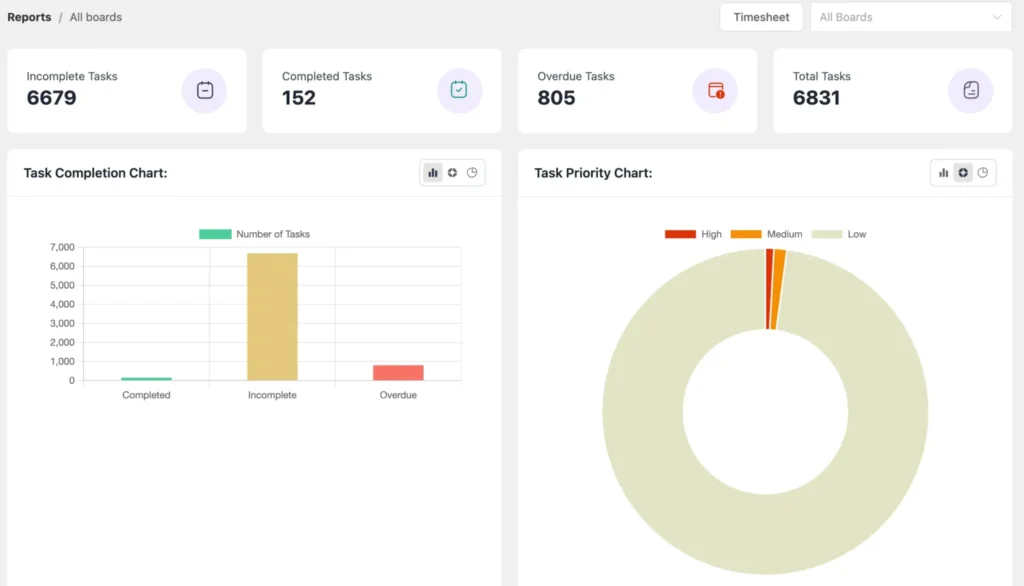
When each deliverable is visible within your project view, it becomes easier to manage expectations, update stakeholders, and keep the entire workflow moving toward completion.
Real-World Examples of Project Deliverables
The best way to understand project deliverables is to see them in action. Here’s what happens when different teams contribute to a real feature launch:
Product team
Purpose: Define the vision, align the team, and ensure the feature solves the right problems.
Deliverables include:
- A feature document outlining what’s in, what’s out, and what users need
- A user journey map showing where the feature fits in the workflow
- An updated product roadmap with relevant dependencies
- Final sign-off from key stakeholders on the approved scope
Type: Internal deliverables (strategy, planning, team alignment)
Development team
Purpose: Turn the feature into working software.
Deliverables include:
- A sprint board breaking the feature into tasks and subtasks
- Code pushed using internal standards and version control
- Unit and integration tests to confirm functionality
- A working build deployed to staging for QA review
Type: Internal deliverables (technical execution)
QA and testing team
Purpose: Validate the feature works as expected and meets quality standards.
Deliverables include:
- A test case document outlining coverage and expected behavior
- A prioritized bug list shared with developers
- Final QA sign-off confirming readiness for release
Type: Internal deliverables (quality control, validation)
Documentation team
Purpose: Help users and internal teams understand how to use and support the feature.
Deliverables include:
- A public-facing feature guide
- An internal FAQ for support and sales teams
- Release notes summarizing what’s new, improved, or still in progress
Type: Internal and external deliverables (knowledge sharing)
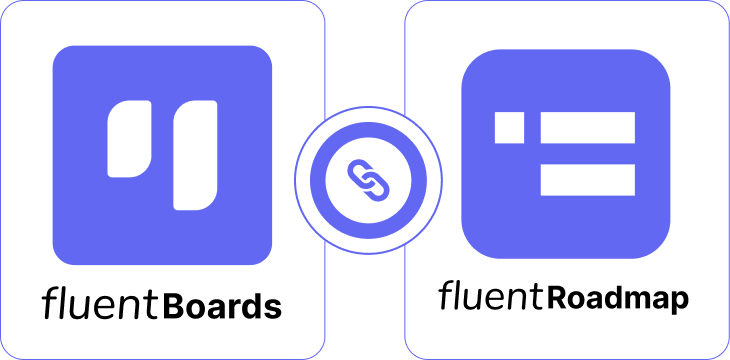
FluentRoadmap Comes Free with FluentBoards Pro!
Marketing team
Purpose: Communicate the value of the feature and support adoption.
Deliverables include:
- Campaign messaging for email, blog, and social platforms
- A launch announcement that highlights the benefit to users
- Visual assets such as screenshots, mockups, or demo clips
- A customer use case or quote, when available
Type: External deliverables (awareness and positioning)
Customer success and support team
Purpose: Ensure customers can use the feature effectively and share useful feedback.
Deliverables include:
- A training session or walkthrough for internal support teams
- Updated support templates and response macros
- A post-launch survey or feedback form focused on the new feature
Type: Internal and external deliverables (enablement and feedback collection)
Common Challenges In Managing Project Deliverables
These are the common challenges project teams face while managing project deliverables:
- Scope creep transforms simple deliverables into complex requirements that drain resources and blow past deadlines
- Unclear ownership leaves deliverables floating between teams with no one taking responsibility for completion
- Poor quality standards result in deliverables that get rejected, require major revisions, or fail to meet stakeholder needs
- Communication breakdowns cause teams to work on the wrong things, duplicate effort, or miss critical dependencies
- Unrealistic timelines force teams to rush deliverables, cutting corners on quality to hit impossible deadlines
- Resource bottlenecks create delays when key team members become overloaded or unavailable at critical moments
- Changing requirements midway through projects forces teams to rework completed deliverables or start from scratch
- Stakeholder alignment issues lead to deliverables that satisfy some people but disappoint others who had different expectations
Explore: 20+ Proven Project Management Tips
Define, Manage, Deliver Successfully
Project deliverables are the backbone of any successful project. Without clearly defined outputs and a structured approach to managing them, even the most promising plans can lose momentum.
The key to staying on track lies in a simple yet effective cycle: Define, Manage, Deliver.
Poorly managed deliverables can quickly derail a project, but now you know how to stay ahead. Define them clearly, manage them visibly, align your team at every step, and deliver successfully.
This cycle is more than just a process. It’s a practical framework for clarity, accountability, and consistent success.
Thank you for reading. Start applying what you’ve learned, and turn every deliverable into a win.
Let’s redefine project management with FluentBoards!
Get Tips, Tricks, & Updates
We won’t send you spam.











![how to create a project management workflow [x steps] (2)](https://fluentboards.com/wp-content/uploads/2025/11/How-to-create-a-project-management-workflow-x-steps-2-768x402.webp)


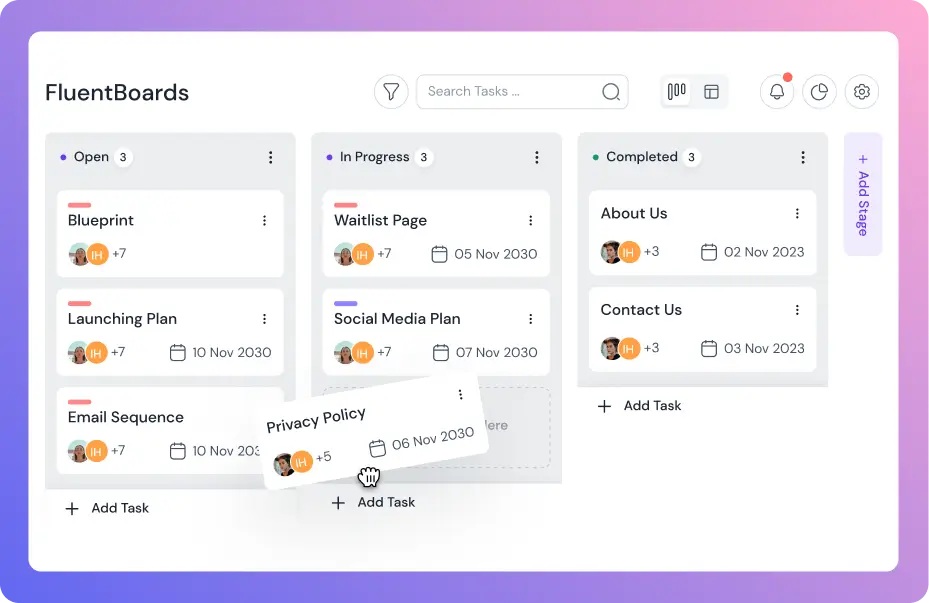
Leave a Reply